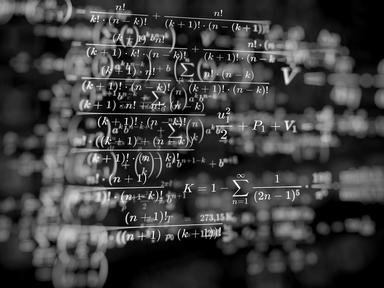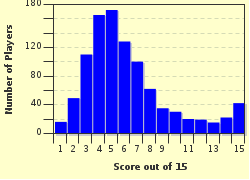Quiz Answer Key and Fun Facts
1. Arithmetic:
What is the value of 3 + (2*7) ? Here * denotes multiplication.
2. Basic Algebra:
Which of the following is equal to (2x - 7)^2 ?
3. Geometry:
The perpendicular bisectors of the sides of a triangle are concurrent in this point.
4. Analytic Geometry:
What can you say about the eccentricity e of a hyperbola?
5. Calculus:
Suppose f(x) is a differentiable function for all real numbers x which also satisfies:
f '(4) = 0,
f '(x) is negative for all x less than 4,
f '(x) is positive for all x greater than 4
What can be said about the critical value x = 4?
6. Advanced Calculus:
Let f(x,y,z) = xyz. What is the gradient of f?
7. Basic Set Theory:
How many 2 element subsets does a 4 element set have?
8. Linear Algebra:
Let A be a square matrix with the property that there exists a positive integer k such that A^k is the zero matrix. A is said to be which of the following?
9. Elementary Number Theory:
Which of the following numbers is congruent to 3 mod 7?
10. Basic Probability:
A box contains 2 good and 2 bad light bulbs. 2 light bulbs are selected from the box without replacement. Find the probability that both light bulbs selected were good.
11. Real Analysis:
Let f be a continuous function with domain the closed interval [0,1]. Which of the following is not necessary true?
12. Group Theory:
Let G be a group. What is the name given to the subgroup that consists of all elements of G that commute with every element of G?
13. Ring Theory:
Let R be a commutative ring with 1 and let m be a maximal ideal. Which of the following is FALSE?
14. Complex Analysis:
Which of the following is NOT a sixth root of 1?
15. Basic Topology:
Let X be a Hausdorff topological space and C a compact subset of X. What must be true of the complement of C?
Source: Author
rodney_indy
This quiz was reviewed by FunTrivia editor
crisw before going online.
Any errors found in FunTrivia content are routinely corrected through our feedback system.

